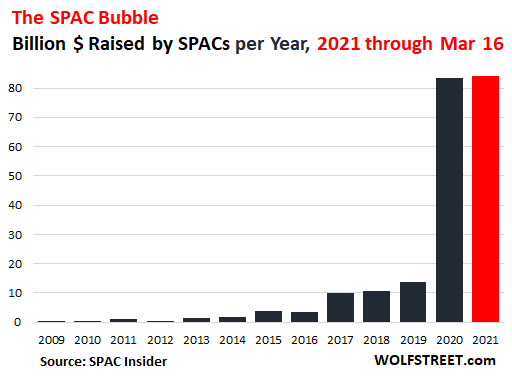Timing & trends
THE CORONAVIRUS PANDEMIC has offered a poignant reminder, as if we needed one, that the United States is a profoundly unequal country. Over the past year, the The Washington Post recently reported, nine tech billionaires saw their net worth increase by a total of $360 billion. Eight of the nine men made their fortunes at companies based in the San Francisco Bay Area or Seattle, where most of them still live. (The biggest winner, Elon Musk, recently decided to ditch California for Austin, the tech boomtown of Texas.) Their runaway wealth reflects not just the divide between the top earners and everyone else but the geographic clustering of prosperity in America.
Things used to be different. From 1930 to 1980, per capita income in most metro areas converged toward the national average. The richest cities in the country included places like Cleveland and Milwaukee. In the 1980s, though, that pattern reversed. As both political parties embraced a hands-off approach to antitrust enforcement and competition policy, the national economy grew increasingly concentrated in fewer and fewer corporate hands, based in fewer and fewer places. This—along with other factors, including restrictive land-use policies and the decline of American manufacturing—helped get us to where we are now: a country in which housing prices spiral out of control in superstar cities like Seattle and New York, while vacant buildings crumble in places like St. Louis and Detroit. Meanwhile, the political and cultural divisions between regions grow ever wider.
In Fulfillment: Winning and Losing in One-Click America, Alec MacGillis, a senior reporter for ProPublica, describes the on-the-ground consequences of this regional divergence, focusing on perhaps the biggest overall winner of the winner-take-all economy: Amazon. The company’s economic clout has only increased since MacGillis began his reporting. Since the pandemic began, its value has grown by more than 50 percent—leading, MacGillis notes, to a hiring spree that has put Amazon on pace to become the country’s largest employer by next year. In Baltimore, where MacGillis lives, it is already a dominant presence, with massive fulfillment centers at what used to be the site of the Bethlehem Steel works at Sparrows Point. In Fulfillment, MacGillis explores how the company has become both a symbol and a driver of regional inequality through its treatment of workers, its impact on small businesses, and its ability to influence the political process. We spoke earlier this week. (This interview has been condensed and edited for clarity.)

SPACs Are Lining Up as the Next WTF Chart of the Year
Who’s going to be the sucker? Even the SEC, which has been asleep through all this, warns retail investors. But in the current mega-bubble craze, no one gives a hoot about anything anymore.
SPACs – Special Purpose Acquisition Companies, or more descriptively, “blank check companies” that have no operations – have accomplished a huge feat that fits seamlessly into the current mega-bubble craze.
So far this year, as of today, 260 SPACs went public and raised $84 billion with their IPOs, according to data provided by SPACInsider. This is a big moment because it exceeded the total amount raised during the entire year 2020 of $83 billion, which itself had been six times as large as the prior full-year record in 2019. At this pace, SPACs are forming the next WTF chart of the year:


Rogers Communications Inc. has signed a deal to buy Shaw Communications Inc. in a deal valued at $26 billion, including debt.
The transaction, which would combine Canada’s two largest cable companies as well as their wireless networks, will require a variety of approvals from federal agencies.
Rogers chief executive Joe Natale told analysts in a morning conference call that it’s too early to speculate on whether the competitors will be required to divest any of their operations.
“But we feel confident this transaction will be approved,” Natale said.

South Korean TV bans commercials so product placement becomes a $100m+ industry and Subway is one of the biggest spenders (with its product in no less than 17 shows).
The sandwich chain’s aggressive use of product placement has made it a ubiquitous presence on the country’s television shows.
In an episode of the Korean television show “The K2,” which takes place in a world of fugitives and bodyguards, a man is being treated with a defibrillator when he enters into a dream state. On the fringe of death, he recalls taking a past love to a Subway restaurant and to a park for a picnic, where he gently feeds her a sandwich and soft drink with the Subway logo facing the camera.
The detail is not a narrative quirk. It is a result of South Korea’s broadcasting regulations and the aggressive use of product placement in the country’s shows by Subway, the American sandwich chain famous for its $5 foot-longs.

- TSA officers screened the highest number of passengers on a single day since March 15, 2020.
- Air travel is starting to pick up again after a challenging year for travel caused by the Covid-19 pandemic.
- Passengers on Friday were still 20% lower than the number of passengers on the same day last year, and down nearly 38% from 2019.
TSA officers screened 1,357,111 people at airports on Friday, marking the highest number of passengers on a single day since March 15, 2020.
The milestone reflects that air travel is starting to pick up again after a challenging year for airlines caused by the Covid-19 pandemic.












